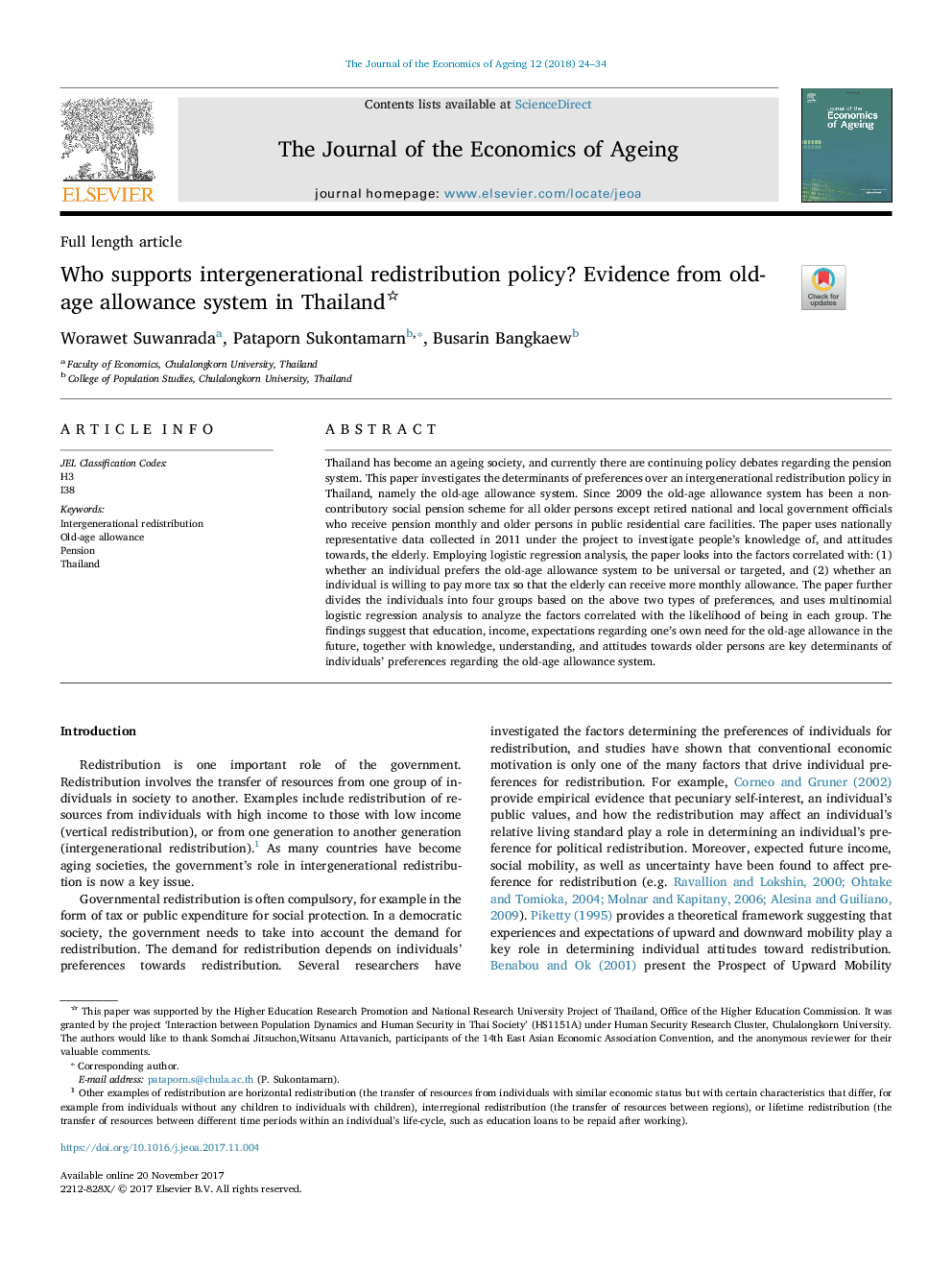ترجمه فارسی عنوان مقاله
چه کسی از سیاست توزیع مجدد بین نسلی حمایت می کند؟ شواهد از سیستم مزایای سالمندان در تایلند
عنوان انگلیسی
Who supports intergenerational redistribution policy? Evidence from old-age allowance system in Thailand
| کد مقاله | سال انتشار | تعداد صفحات مقاله انگلیسی |
|---|---|---|
| 149605 | 2018 | 11 صفحه PDF |
منبع

Publisher : Elsevier - Science Direct (الزویر - ساینس دایرکت)
Journal : The Journal of the Economics of Ageing, Volume 12, November 2018, Pages 24-34

